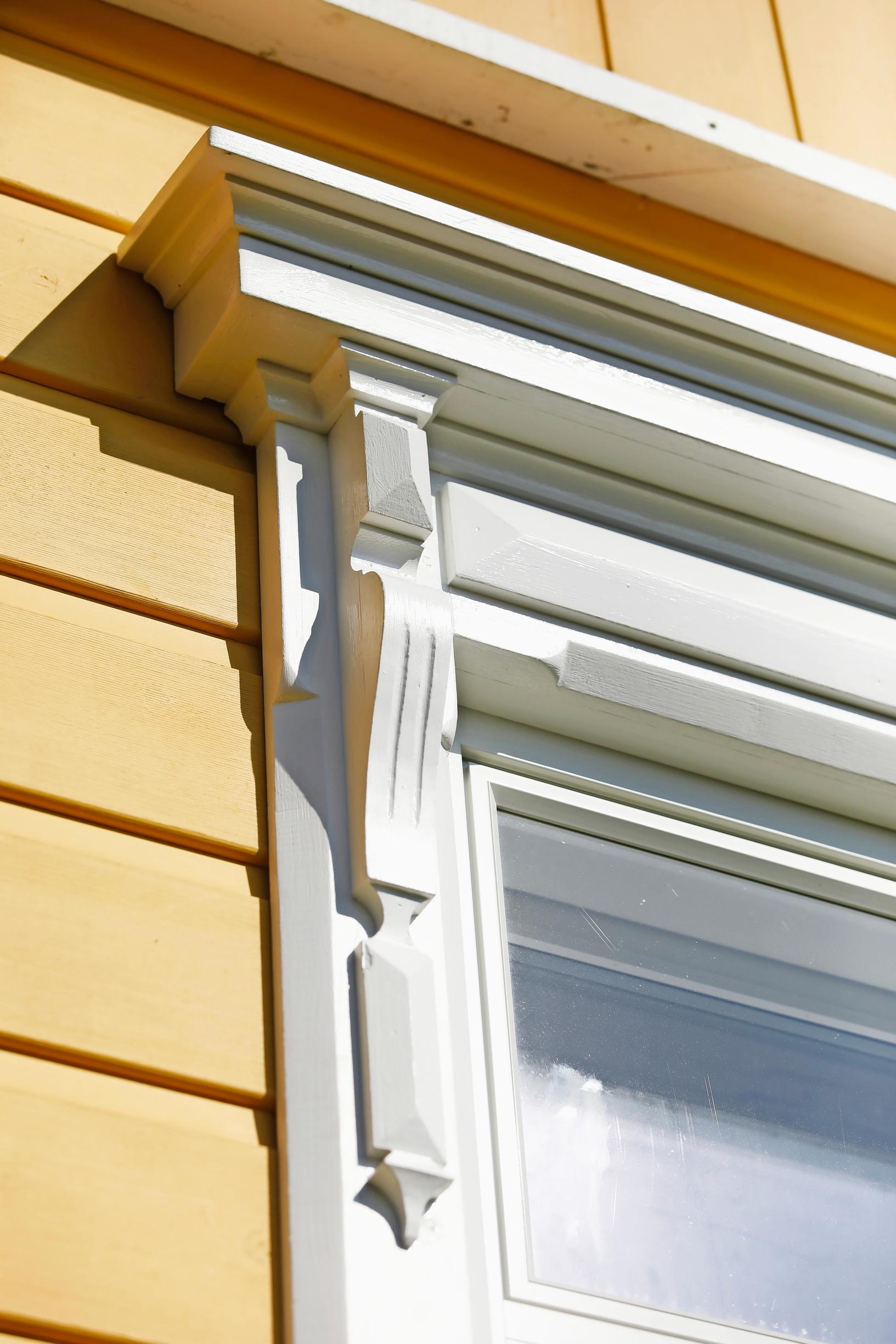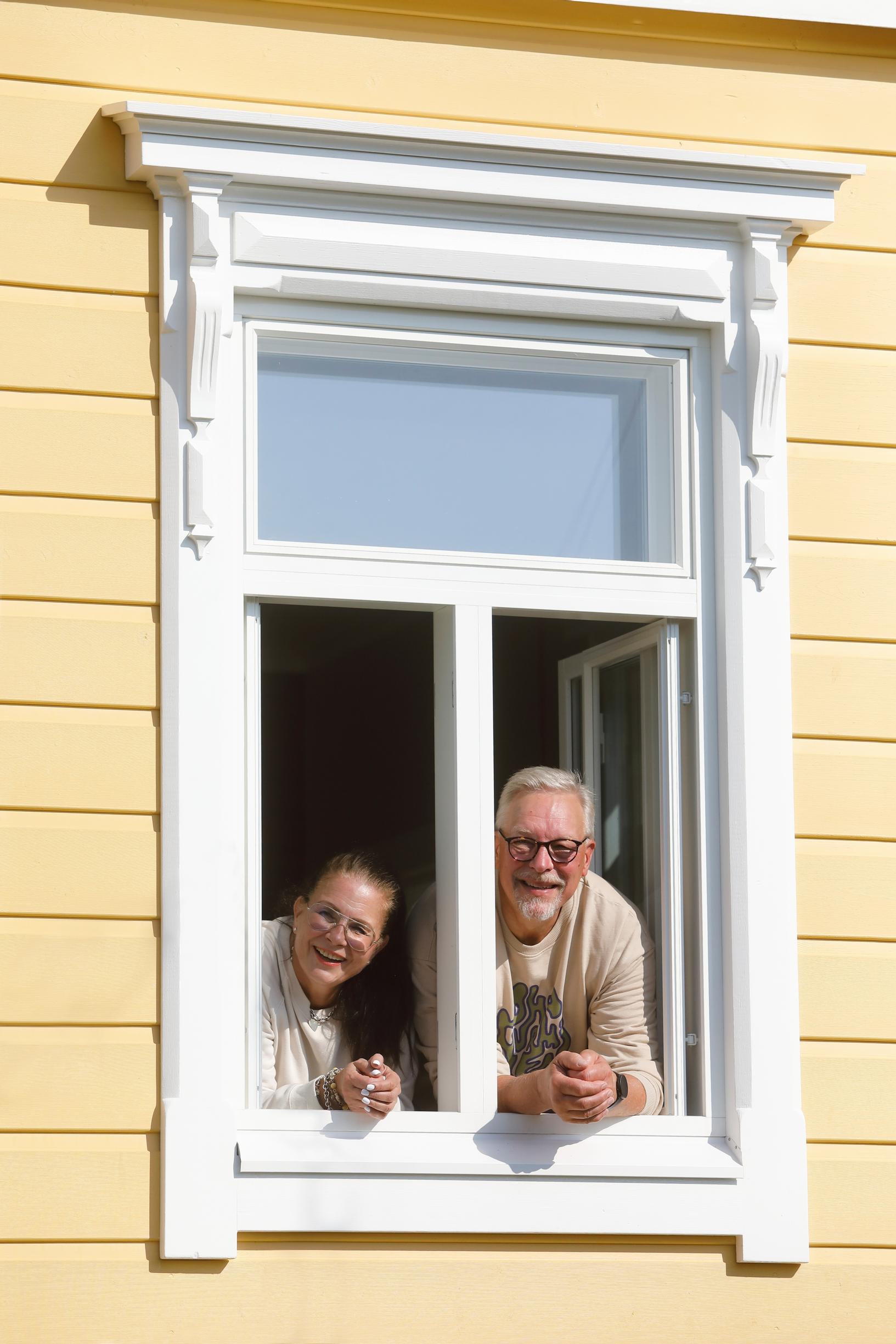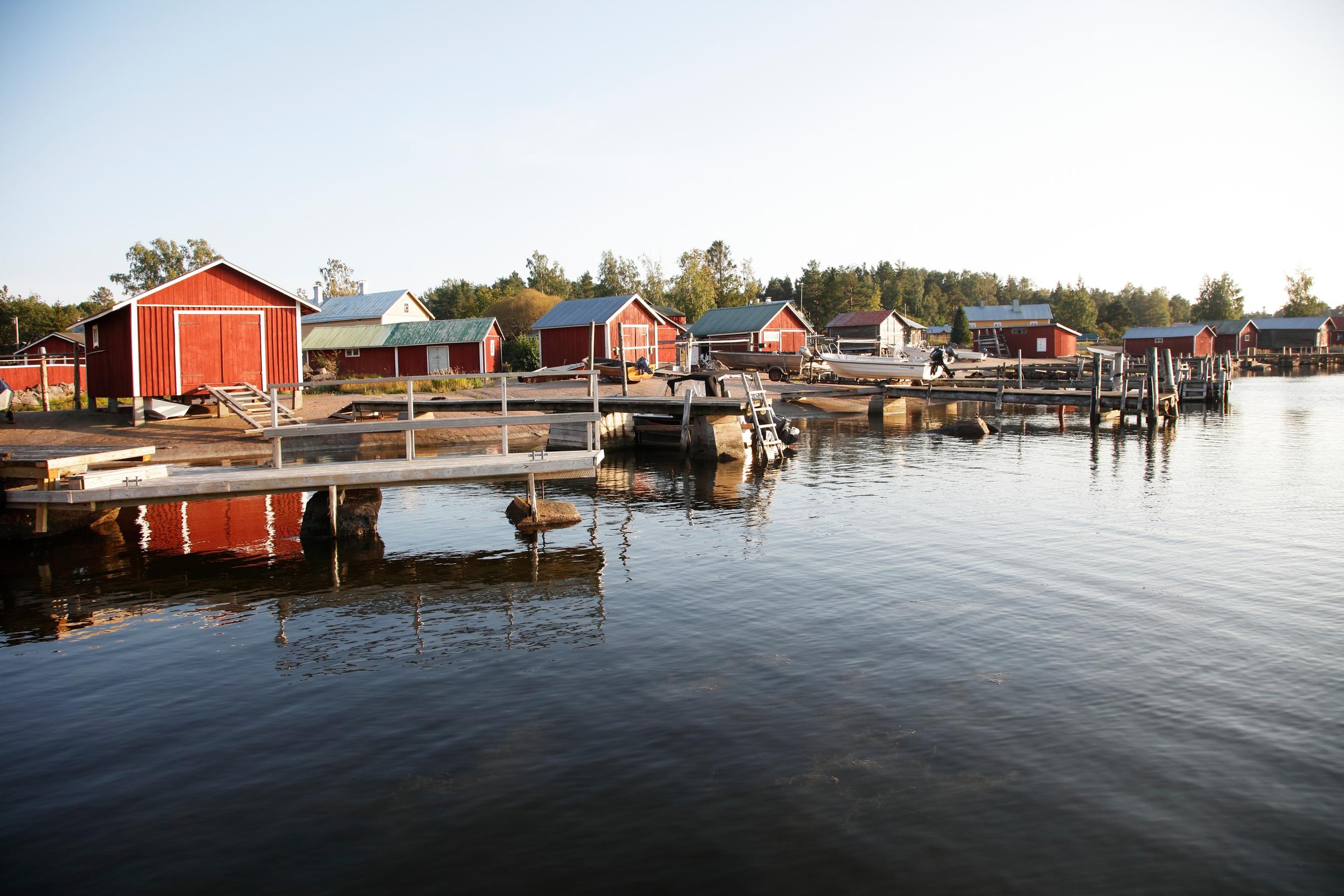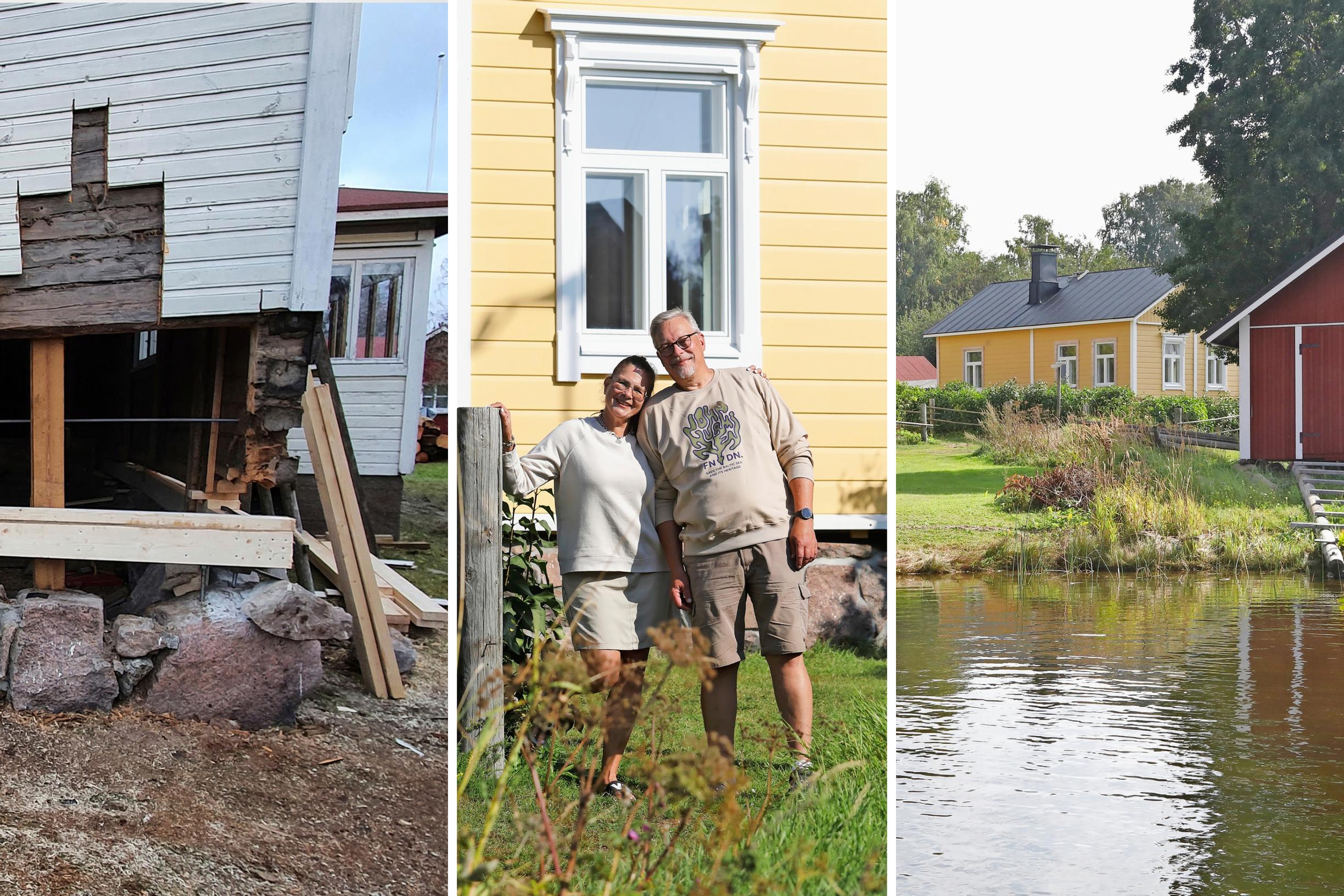
Renovating an old archipelago house on the open sea: “We decided that if we do something, we do it properly”
Finnish Markku Kiiski and his family spend their vacations in his grandmother’s house, a place he has cherished since childhood. When they decided to renovate, it turned out to be much more than a simple surface update.
At times, it felt like there was more soft, damp timber than dry. The couple worried nothing would remain standing—and, above all, wondered what they had gotten themselves into. Originally Markku Kiiski and Susanne Ranta-Kiiski had only planned to check the condition of the attic in the old log house to prevent any surprise leaks. But once they got started, the renovation ended up being much bigger—though they haven’t minded at all.
An archipelago house in the Gulf of Finland
We are a marketing and communications professional, Susanne Ranta-Kiiski, and a retired international sales executive, Markku Kiiski.
Cottage: A more than 100-year-old log-framed archipelago house with 70 square meters (750 sq ft) on the main floor, plus a sauna, an old barn, and a newer storage building. You can find it on Instagram @tupajakammari.
Where: Off the coast of Hamina in the eastern Gulf of Finland.
A place far out at sea is worth preserving, and it's also full of memories for Markku. When the boat sets off from the Hamina harbor, it’s a half-hour ride toward open water and the archipelago. Waiting at the end is the house that Yrjö Kiiski built for his family in 1910. Located on an island in the eastern Gulf of Finland, this has been the ultimate summer retreat for Markku, originally from nearby Kotka, ever since he was a boy.
Back in the day, the family rule was to head for the island as soon as the school year ended and not return until the day before the next one started—there were plenty of friends and things to do. Markku still meets many of those same friends there each summer. Until the 1960s, Markku’s grandparents lived in the house year-round. After that, it stayed a shared family summer place until Markku bought it for his own family ten years ago.

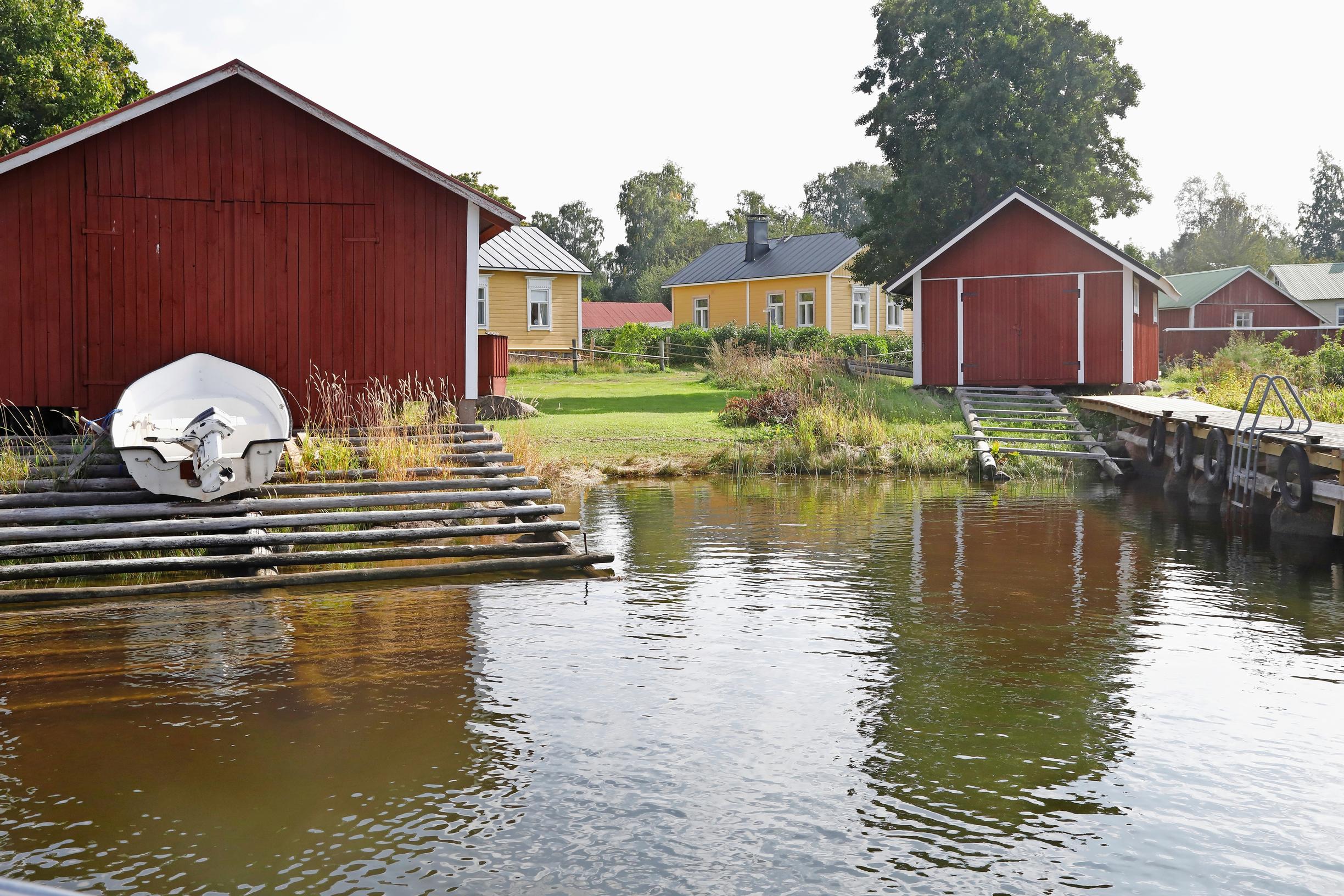

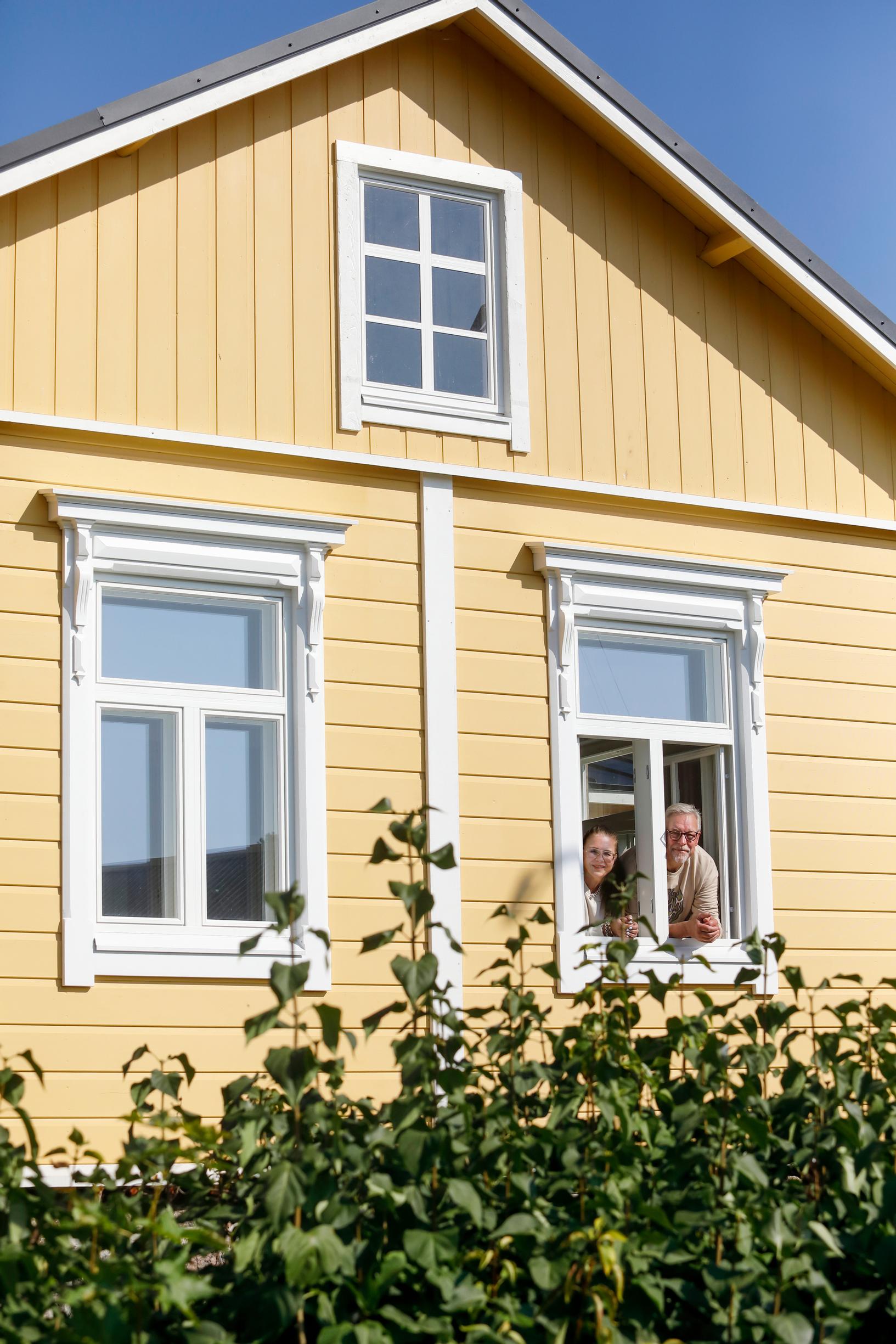

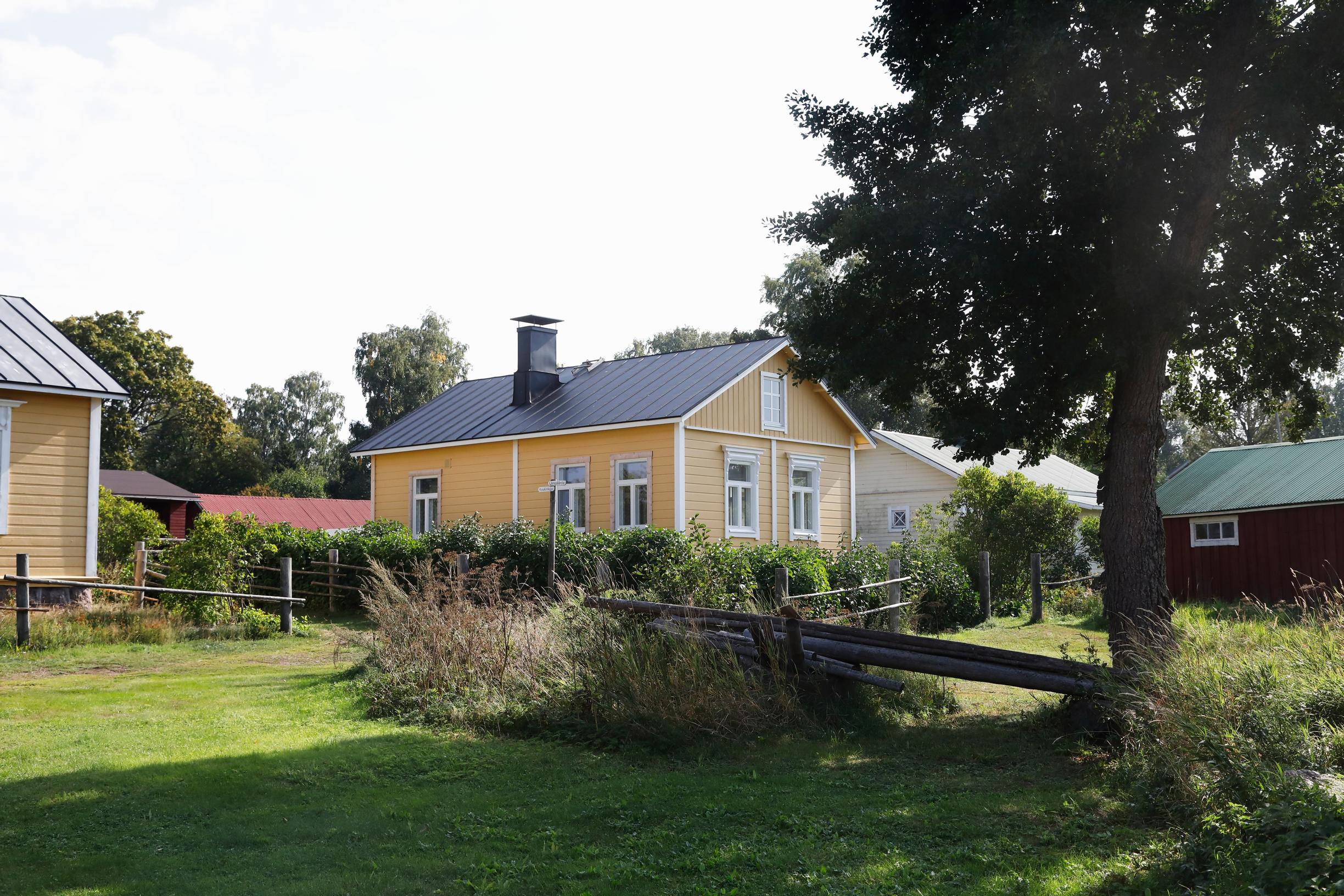


In those first summers, Markku and Susanne focused on improving the outdoor sauna and sprucing up the yard. Once Markku retired, they took a deeper dive into the house’s condition.
“We cleared piles of old wood shavings from the attic and peeked under wallpapers and fiberboards downstairs. We started thinking that maybe we should do everything the house really needed now, so it could last another hundred years in good shape for the next generations. And after all, my ‘easygoing’ retirement days had just arrived,” Markku says with a laugh.
In August 2021, the couple rolled up their sleeves. The property’s former clothing and net sheds had already been turned into living spaces, letting them renovate the main house gradually. Markku and Susanne emptied it out and carried the furniture to the old barn.
Some beams beneath the attic’s old wood shavings were rotten or charred from an early fire. The same went for some floor beams. The walls also had rot and patch logs from elsewhere.

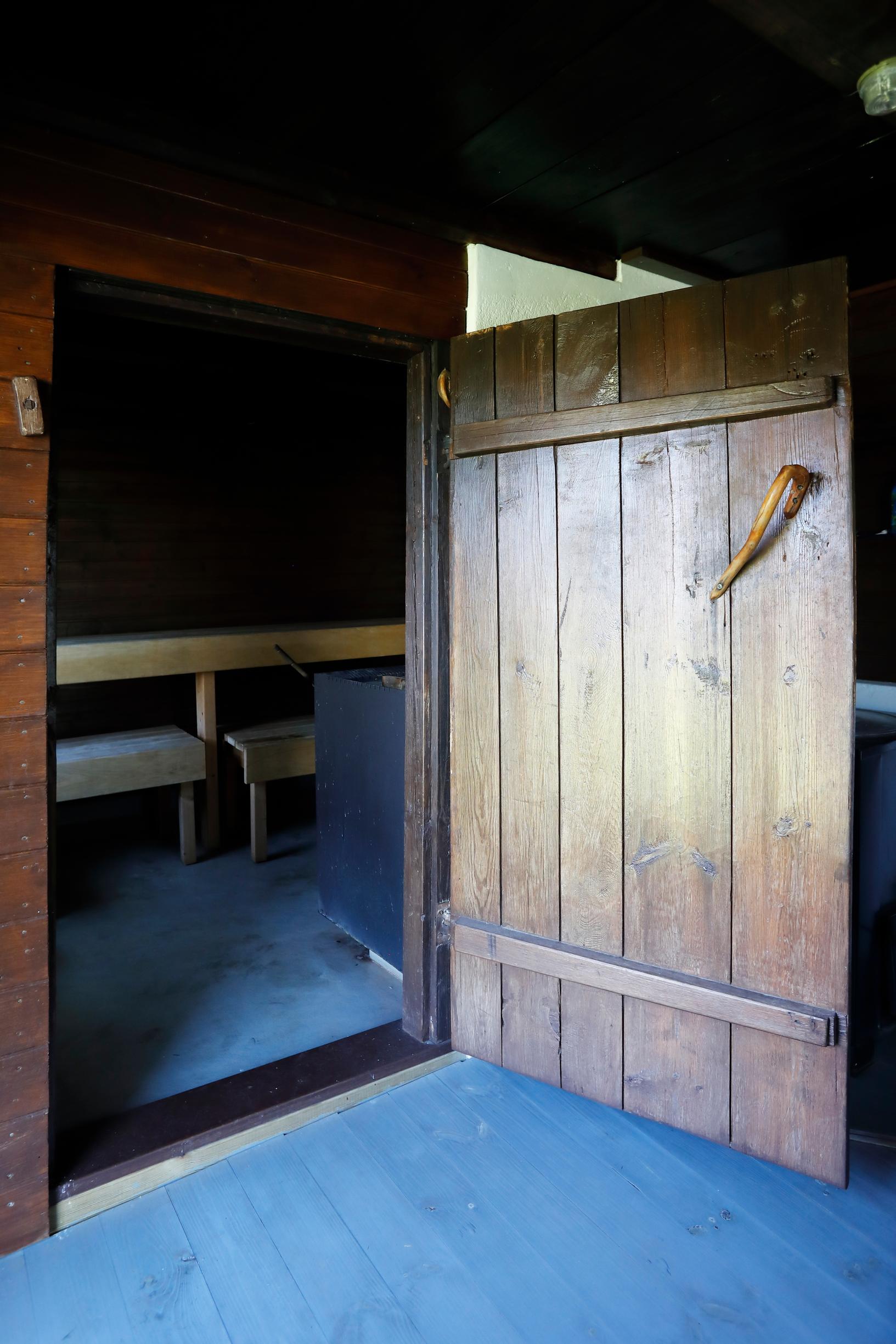

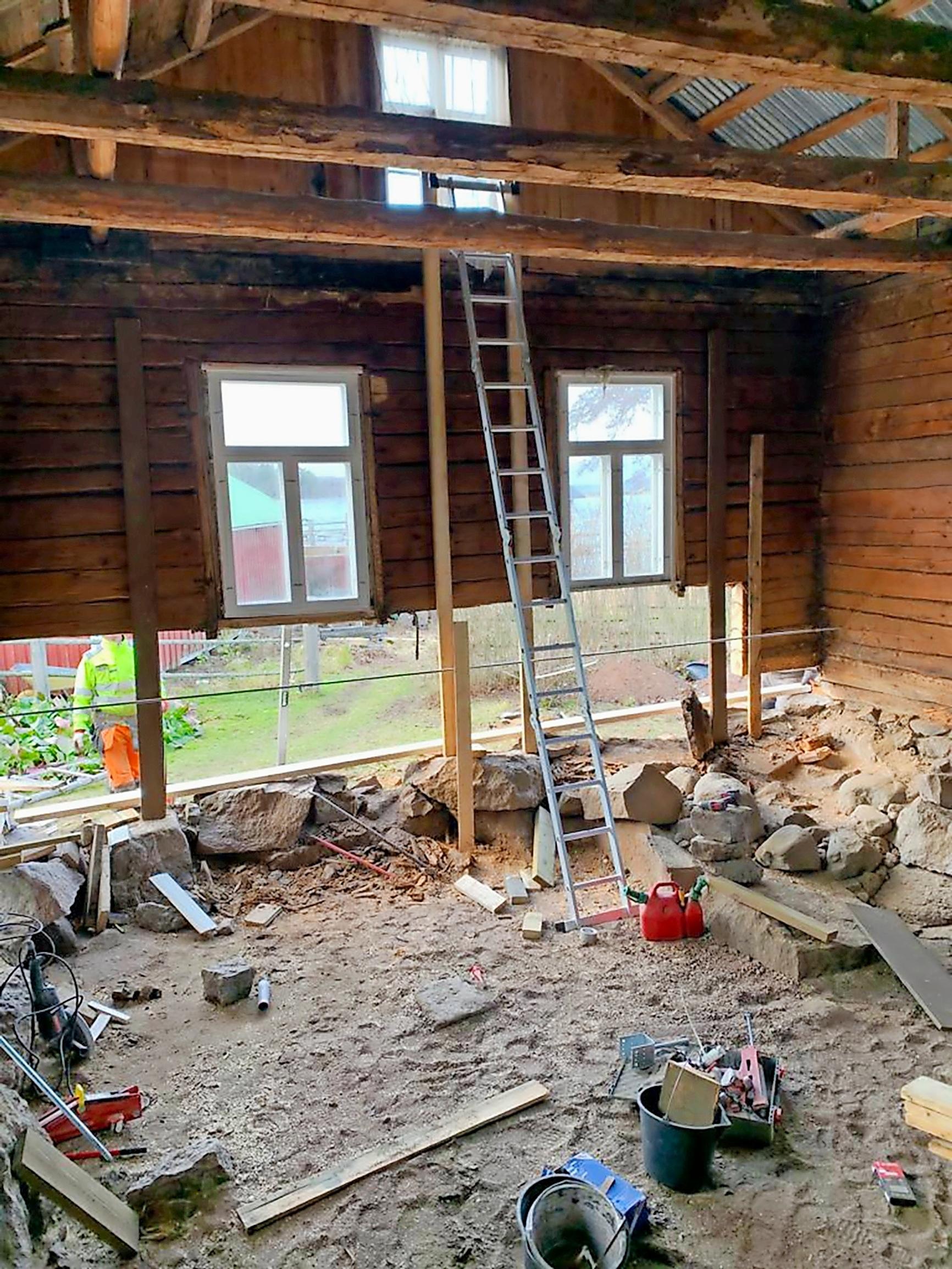

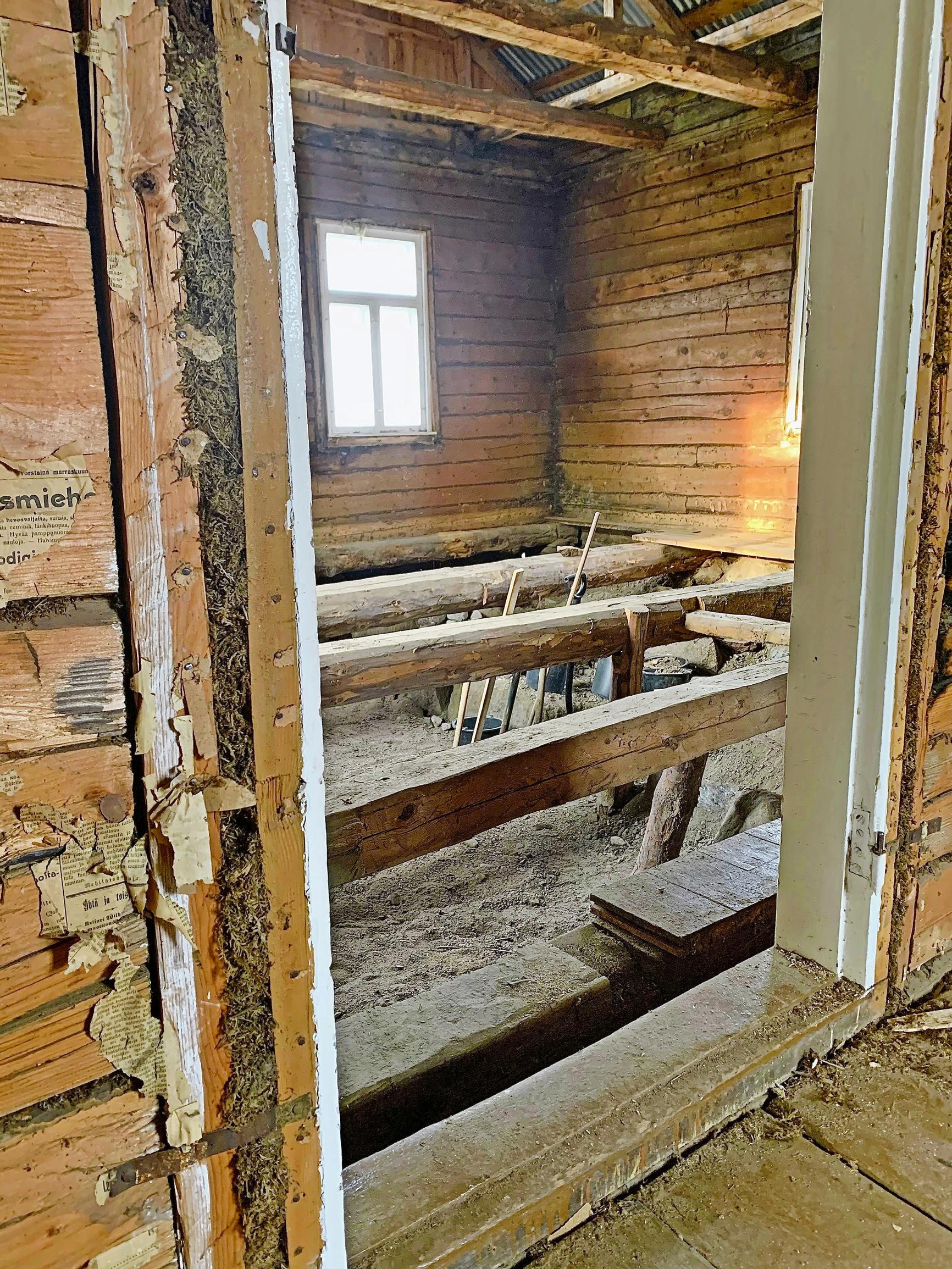

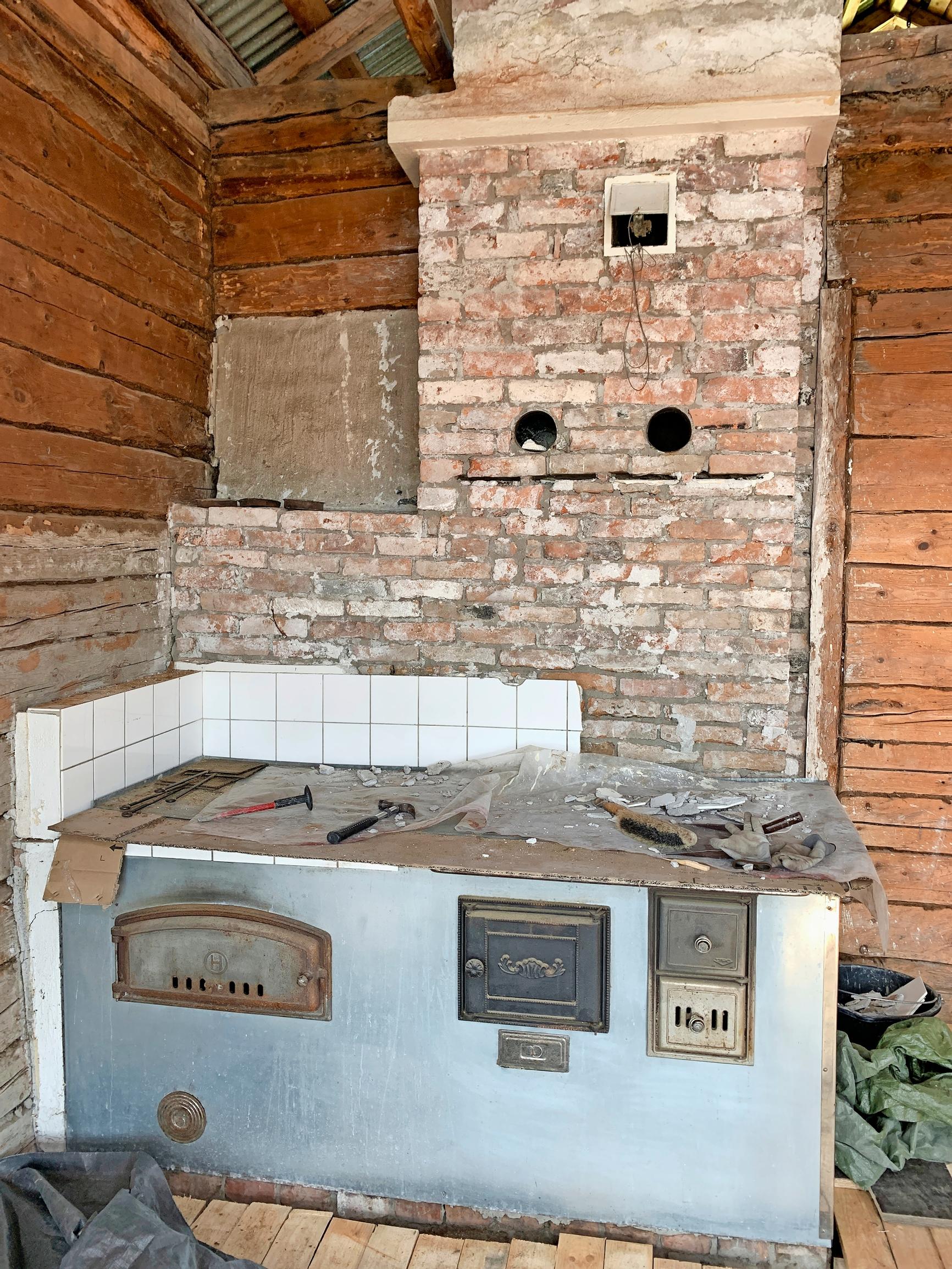

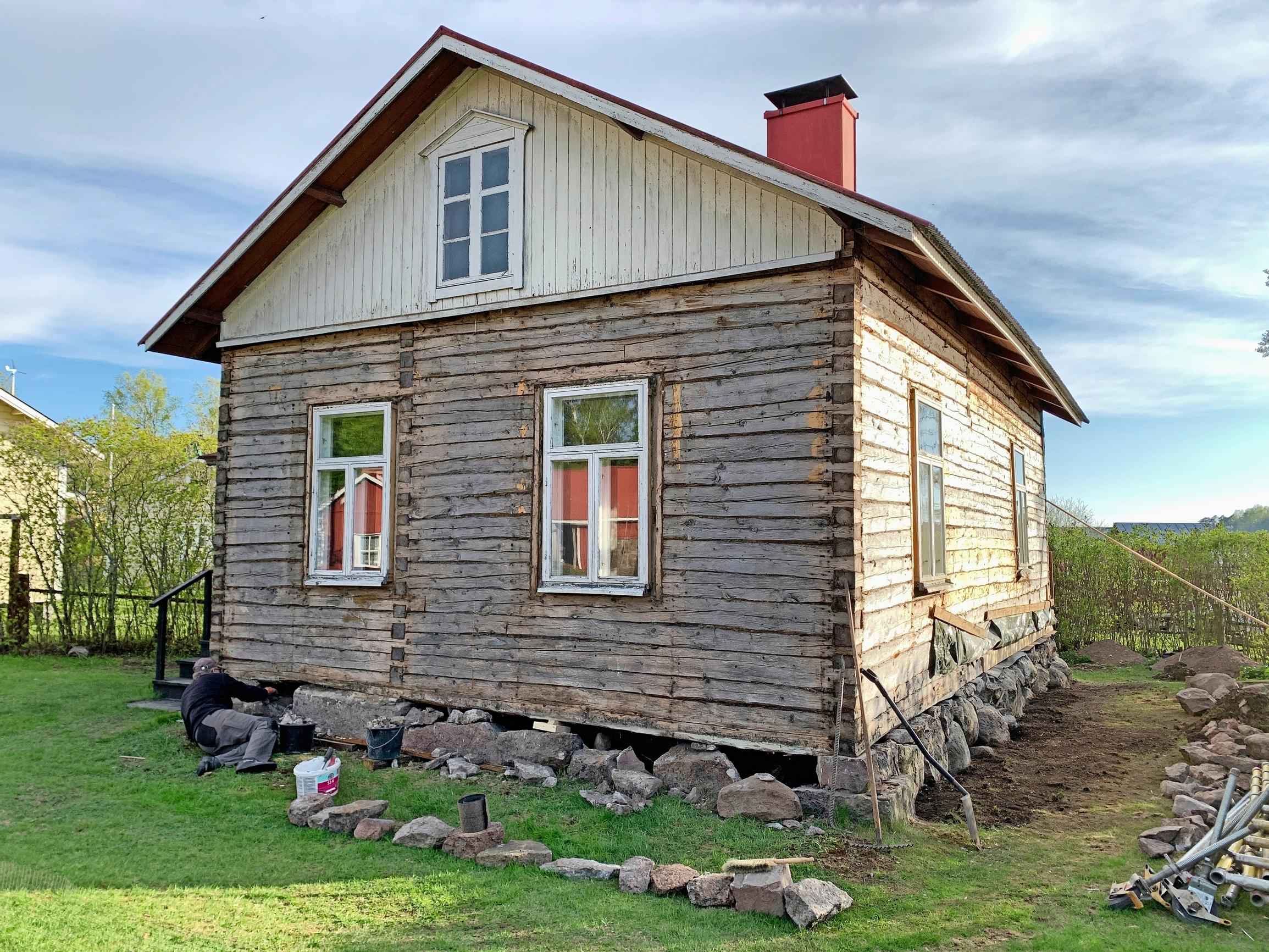
After a busy autumn, the log frame of the house emerged from beneath removed wallpapers and wood-fiber boards. They changed the layout so that a formerly unheated vestibule became the kitchen, and they expanded the veranda.
During the renovation, Susanne found herself unexpectedly smitten by the sight of exposed log walls and other old materials.
“When we took off the wallpaper, the paper backing, and the wood-fiber board, I was apprehensive. Would the house lose its charm if we stripped away decades of layers? However, we discovered some gorgeous, pristine log walls in places,” Susanne recalls.
“It felt like we still made the right call.”
Before winter came, they also removed the outer cladding. Underneath, they found weathered logs that revealed the siding had been added later. Some logs needed replacing at the bottom of the walls and below the windows. Markku and Susanne did most of the demolition themselves; for the restoration, Markku acted as an assistant to a pro.

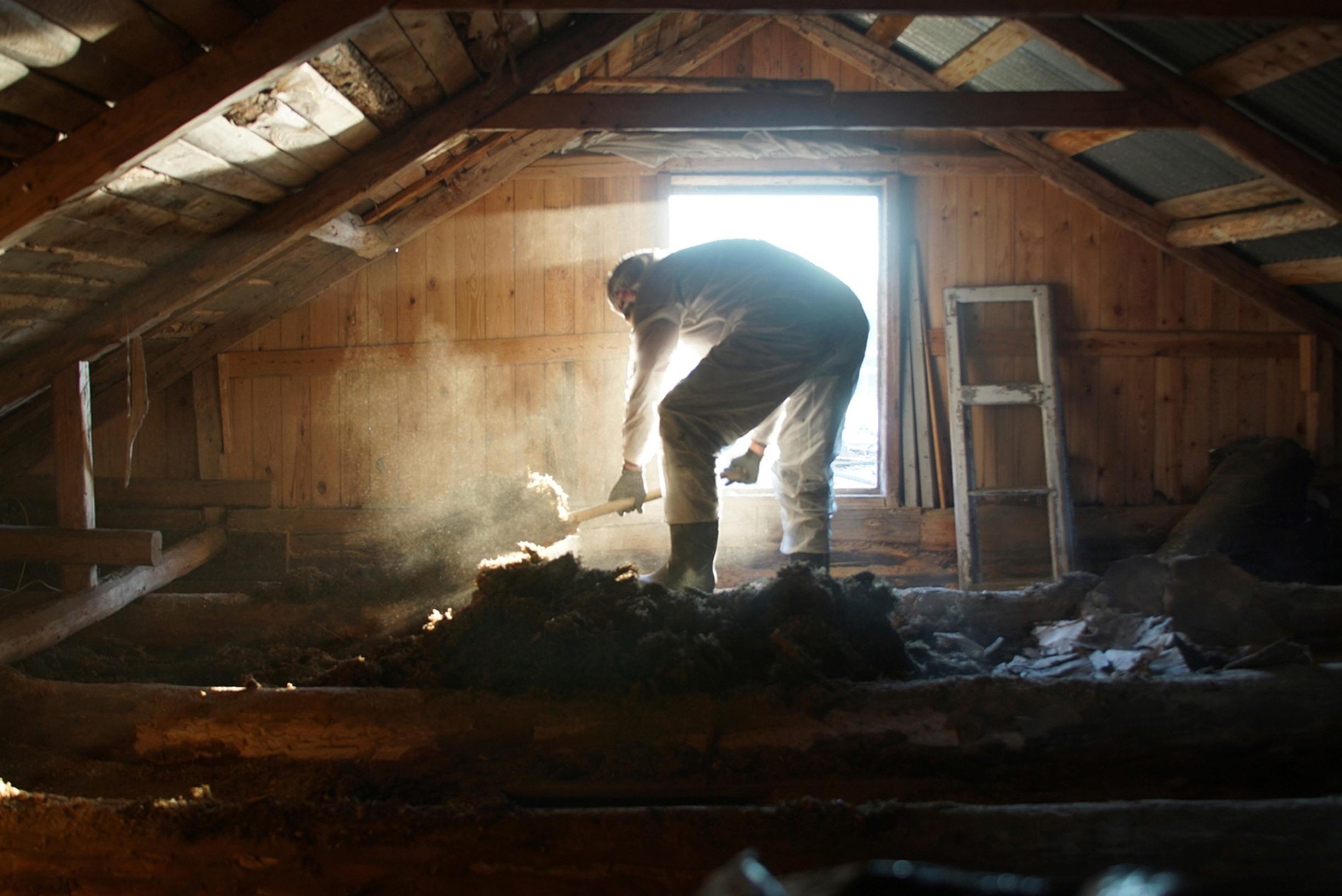

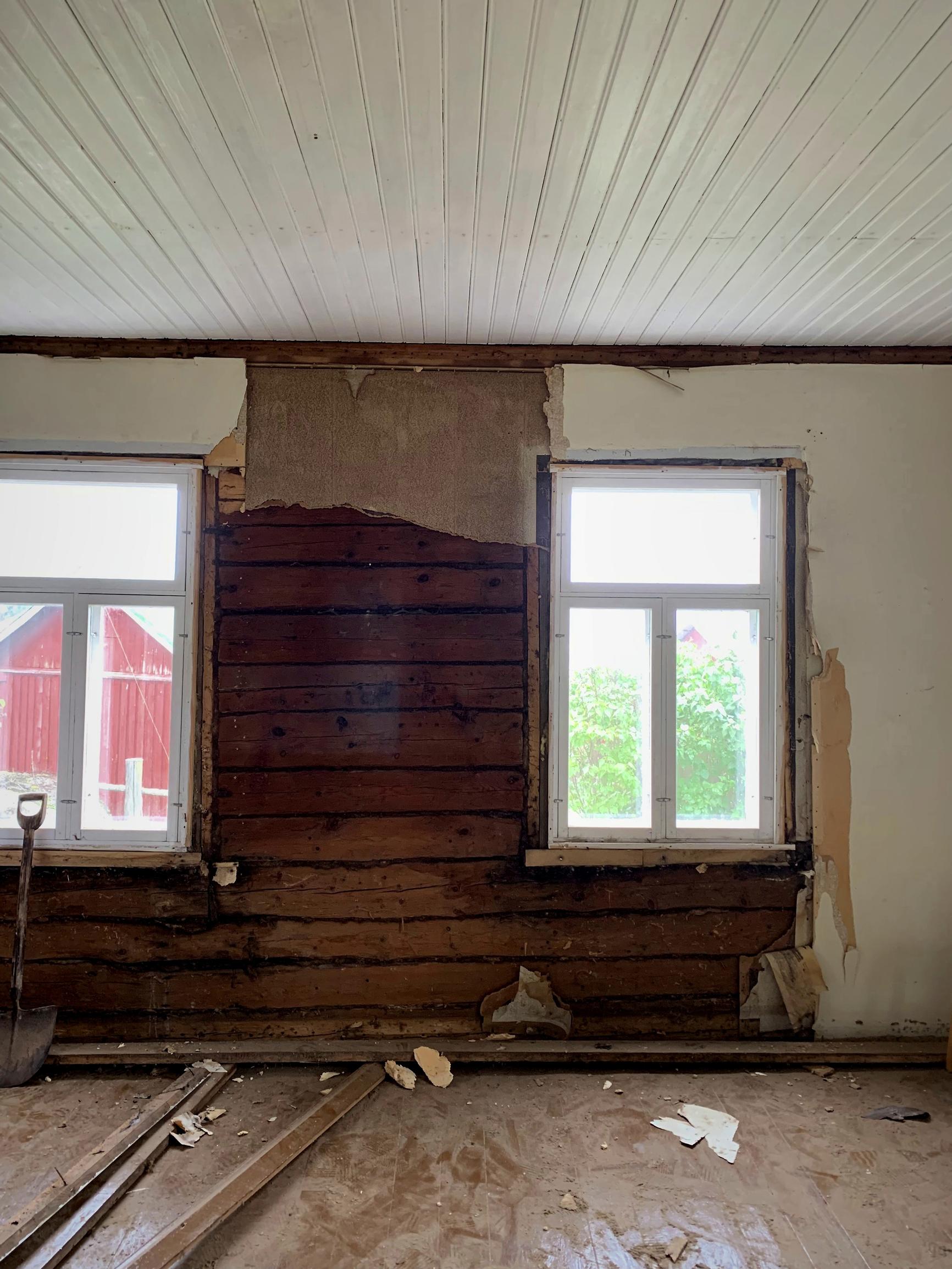

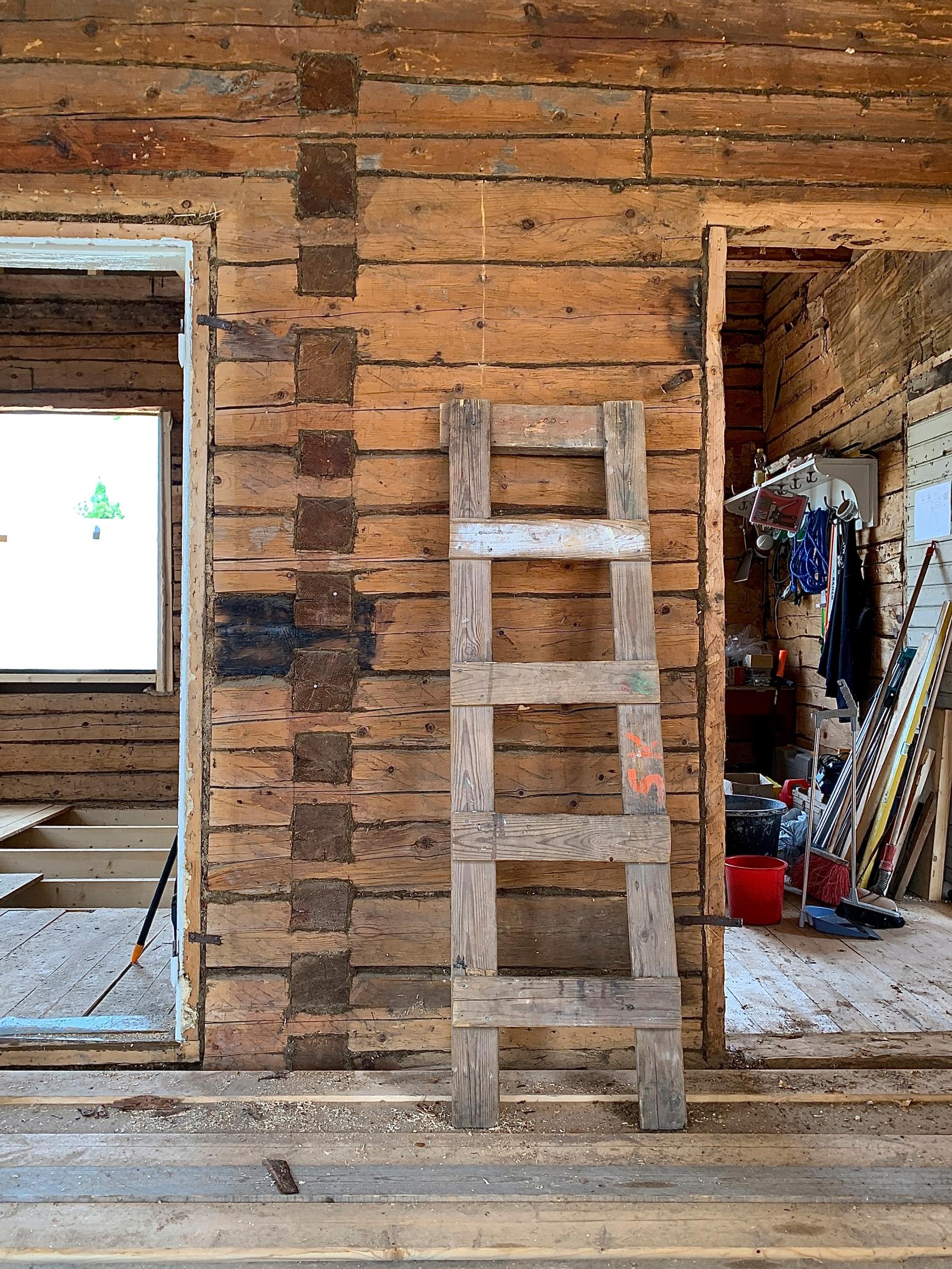
The couple wanted to rely solely on natural materials for the repairs. They chose windbreak boards for the exterior walls and blow-in wood fiber insulation for the ceilings and subfloors.
“Perhaps we could have gone for less insulation if we’ll mainly be here in summer. But who knows what might happen decades down the line,” Markku says.
“Better to do too much than too little, as our late neighbor used to say: ‘If you’re going to do something, do it properly or not at all.’”
In the first renovation summer of 2022, the biggest project was a new dark standing-seam metal roof. In August, a barge arrived loaded with boards, floor planks, custom windows, and various supplies. Delivering to an island is not like delivering to a driveway, so they ordered as much as they could in one go. The pandemic and the war in Ukraine made materials more expensive and harder to acquire right when they started building.
“Prices shot up, and availability was a challenge. For example, we couldn’t find any pulled glass with a textured finish—stores had run out during the renovation boom, and we couldn’t get it from Russia either,” Markku recalls.

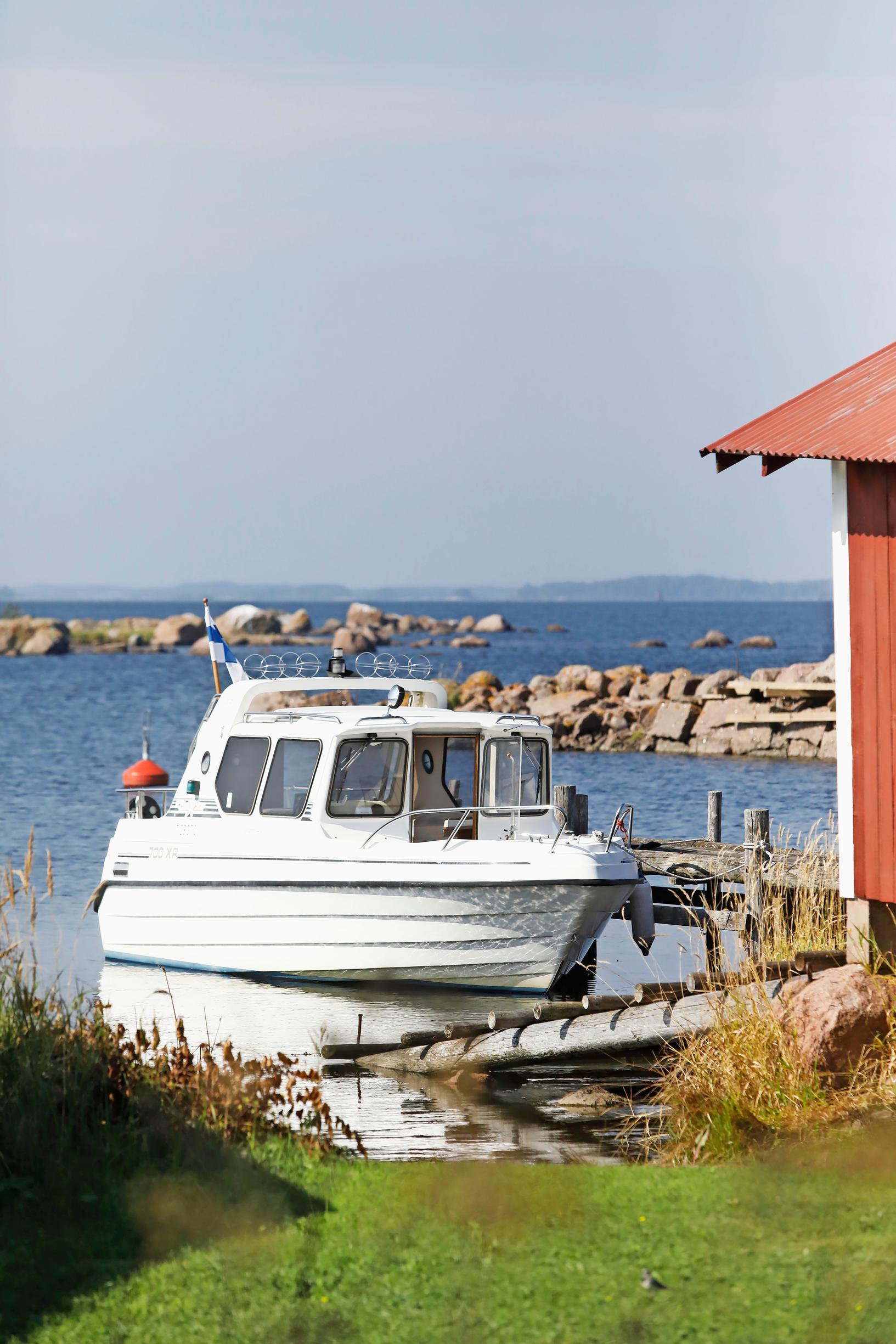

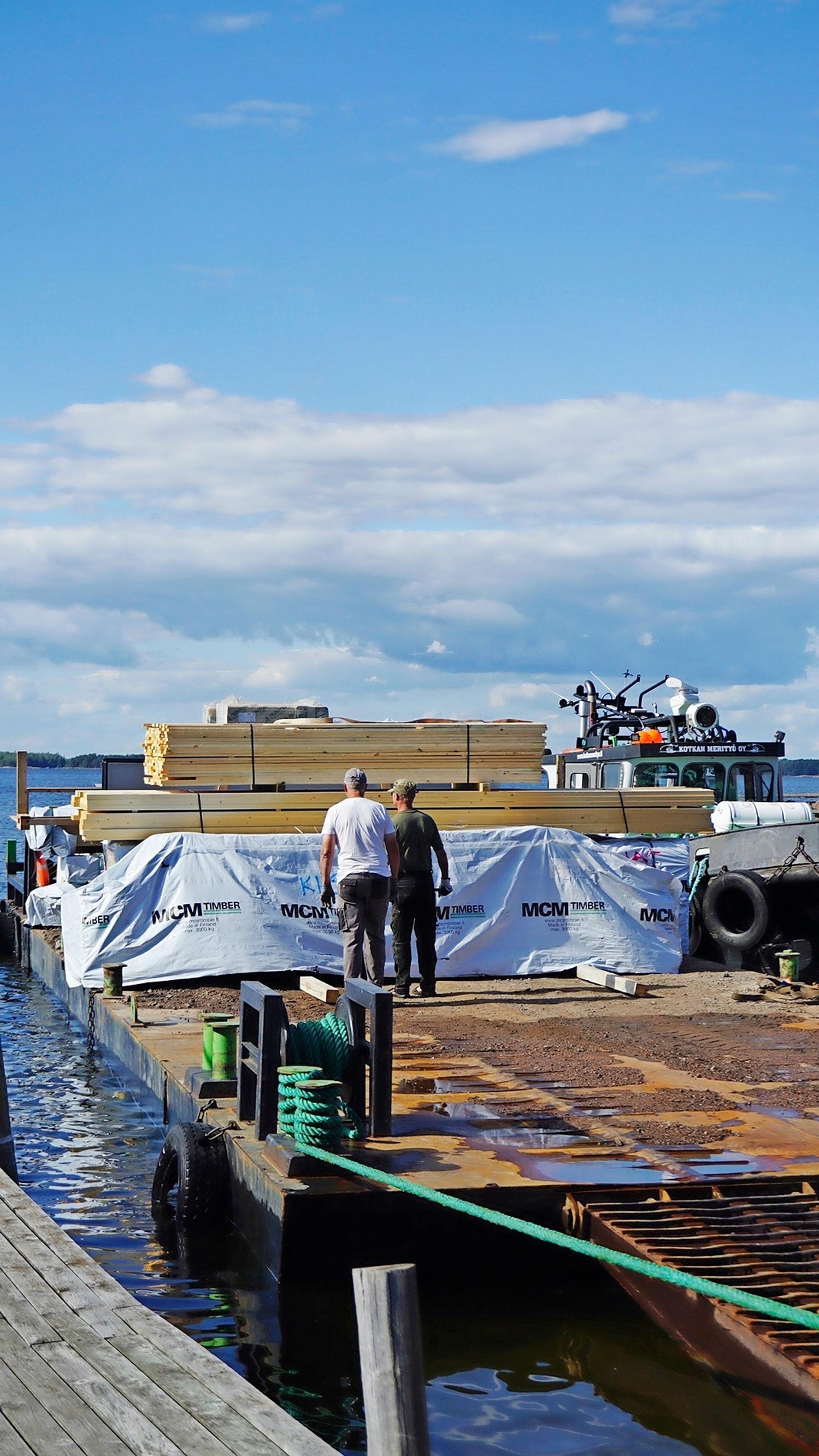

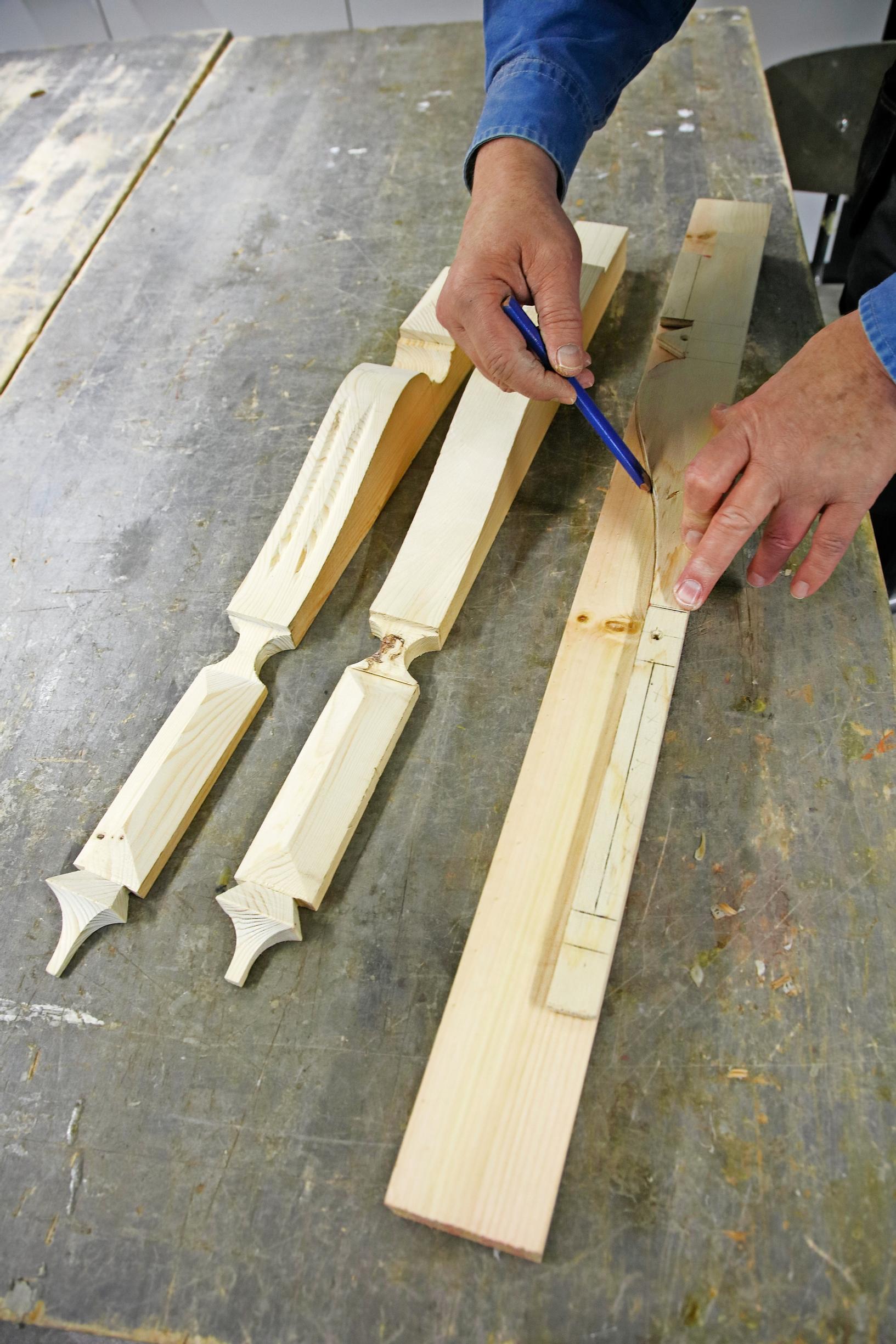

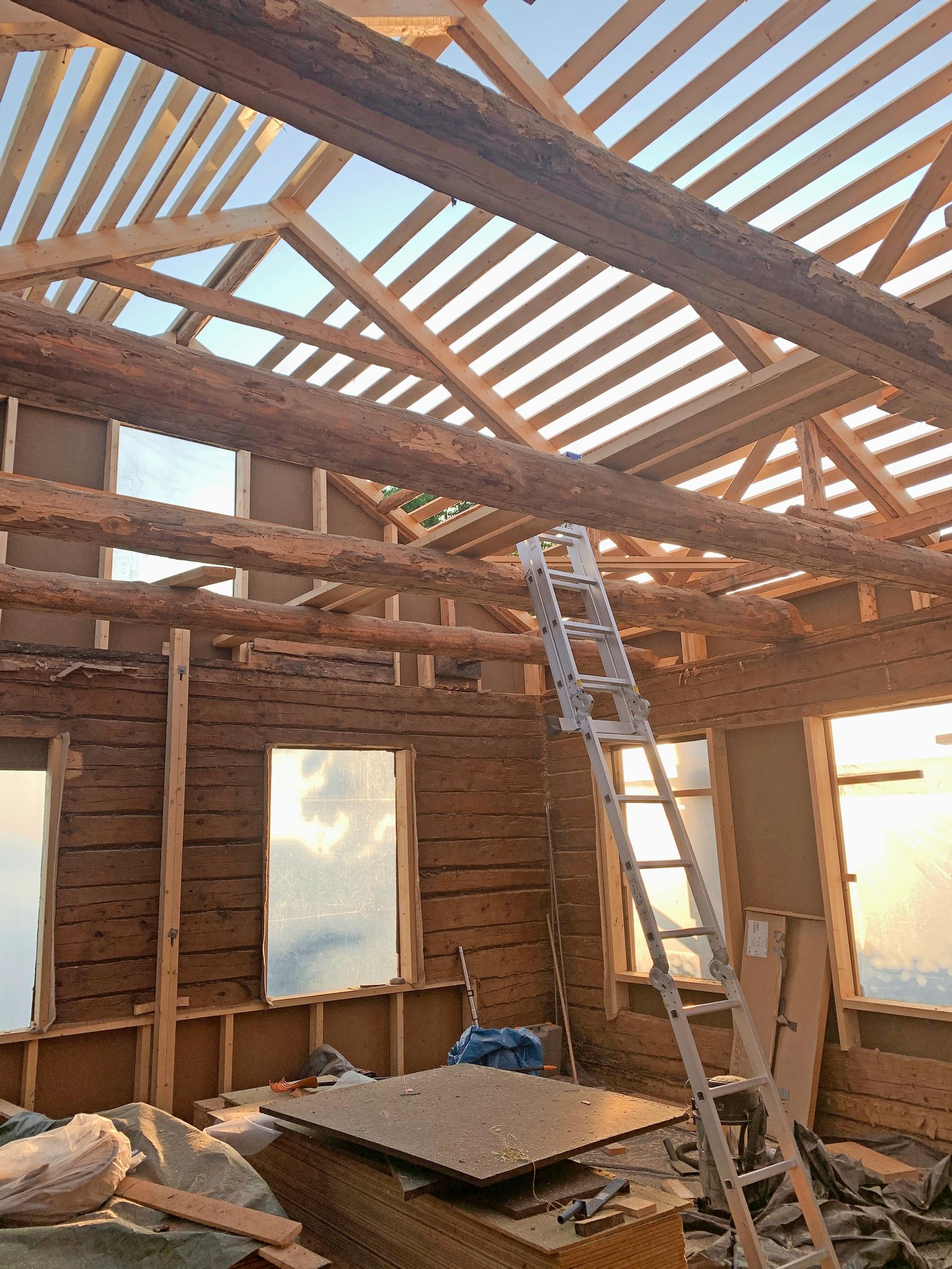
Being by the sea means moisture, wind, and intense sun can all take their toll on a house. Since they aimed to improve insulation and the old windows were already replaced in the past, they had new ones made by a carpenter, with wooden frames and interior sashes but aluminum on the outside. They also added double glazing.
Markku removed the fragile old trim boards and decided to replicate their decorative pattern in a local woodworking course. He sourced boards and planks from the area, and over spring, he finished making the trim. They also had window and door casings, plus baseboards and crown molding, milled to match the original style.
The following summer, Markku and Susanne moved on to repairing the foundation. Only the cornerstones stayed put, while the smaller ones were repositioned and reworked with a mason.
During vacation time, the couple roped in family and friends to help paint the new exterior cladding. They chose a yellow shade to match the neighboring house.
In the bedroom, they saved the original plank floor. But in the main room, future kitchen, and entryway, the old boards weren’t salvageable, so they replaced them.
“We wanted to keep as much of the old house’s character as possible, but we didn’t feel obligated to preserve everything,” Markku says.

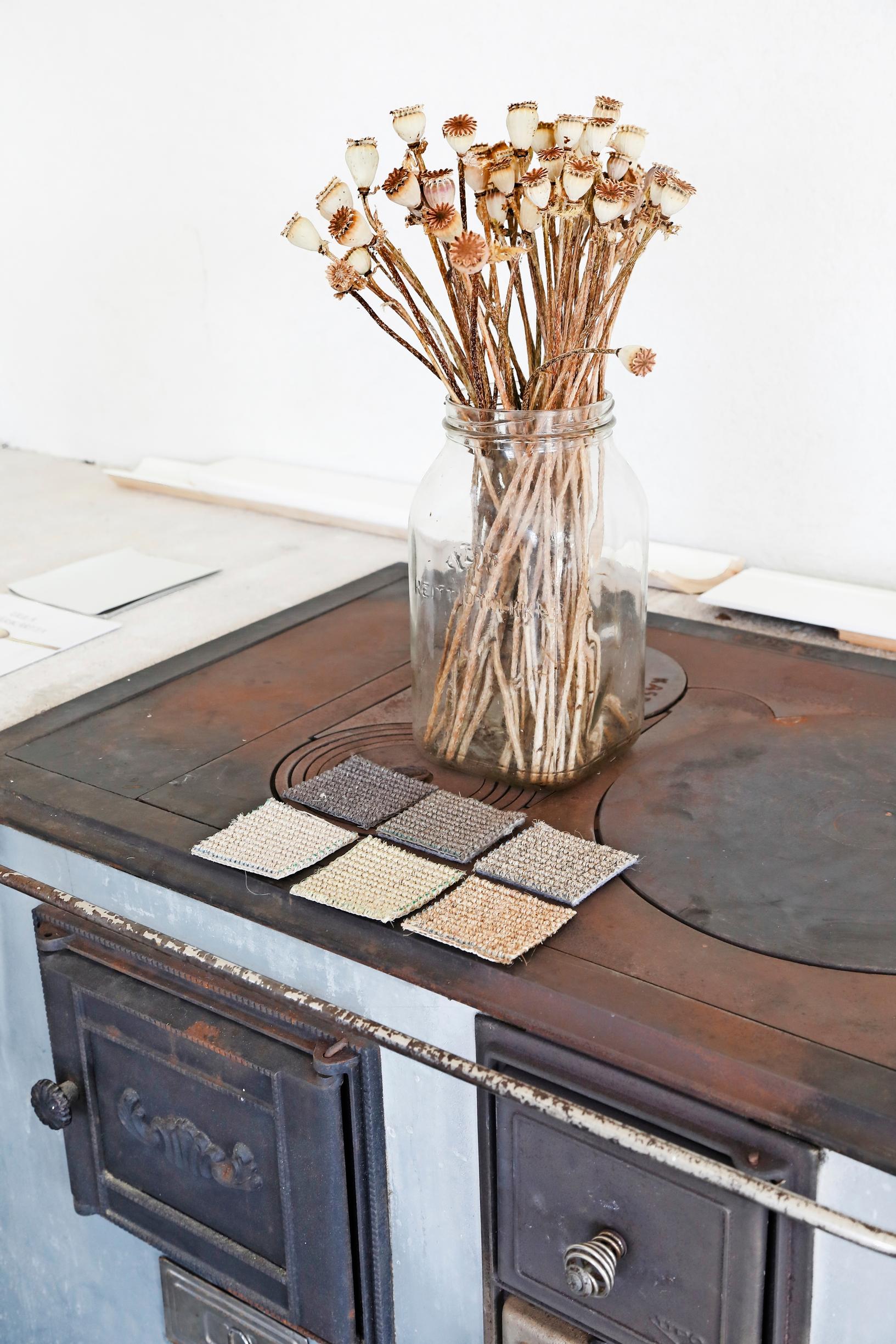
The renovators straightened the walls. One or two interior walls were left with exposed logs, lending a relaxed, rustic feel. The others were fitted with furring strips, then wood-fiber board, and finally lining paper before painting.
“We debated using paper underlayment or wallpaper backing. We chose lining paper, worried that wallpaper backing might wrinkle in a house left cold through winter. We also felt more confident hanging the paper ourselves,” Susanne explains.
They took their time picking paint colors, laying samples on floors and walls and observing them in different lighting.
“We discovered we really had to see the colors in the actual rooms at different times of day. We also needed to test them on the real materials, since each reflects light in its own way,” Susanne says.
They painted the ceiling boards once with before installation and again afterward. They used the same color on the ceiling and baseboard moldings.
Because the cottage stays unheated in winter, they picked a furniture paint for the walls. For the floors, Susanne chose a warm, natural white.
“It’s fairly light but so beautiful,” Susanne says.

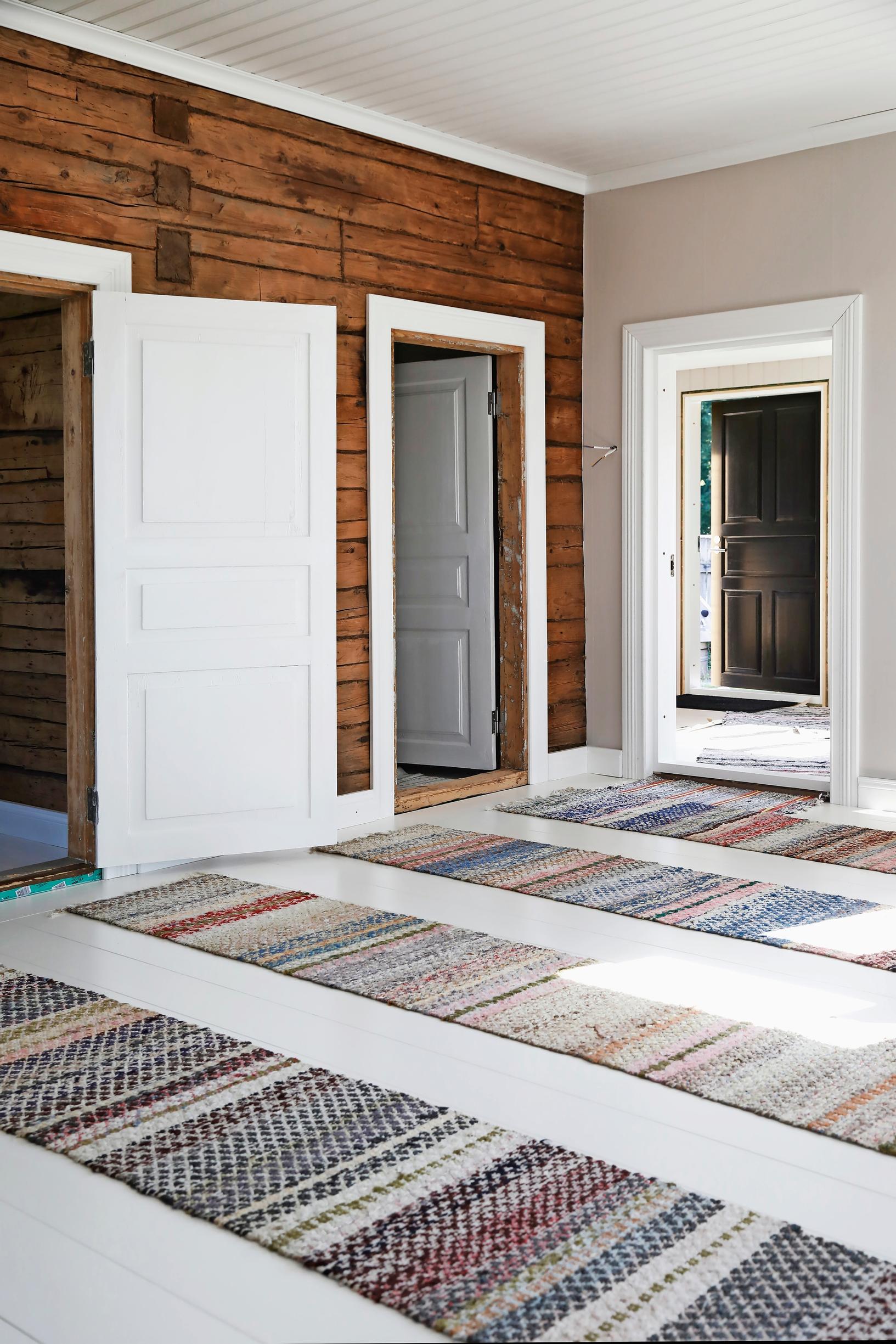

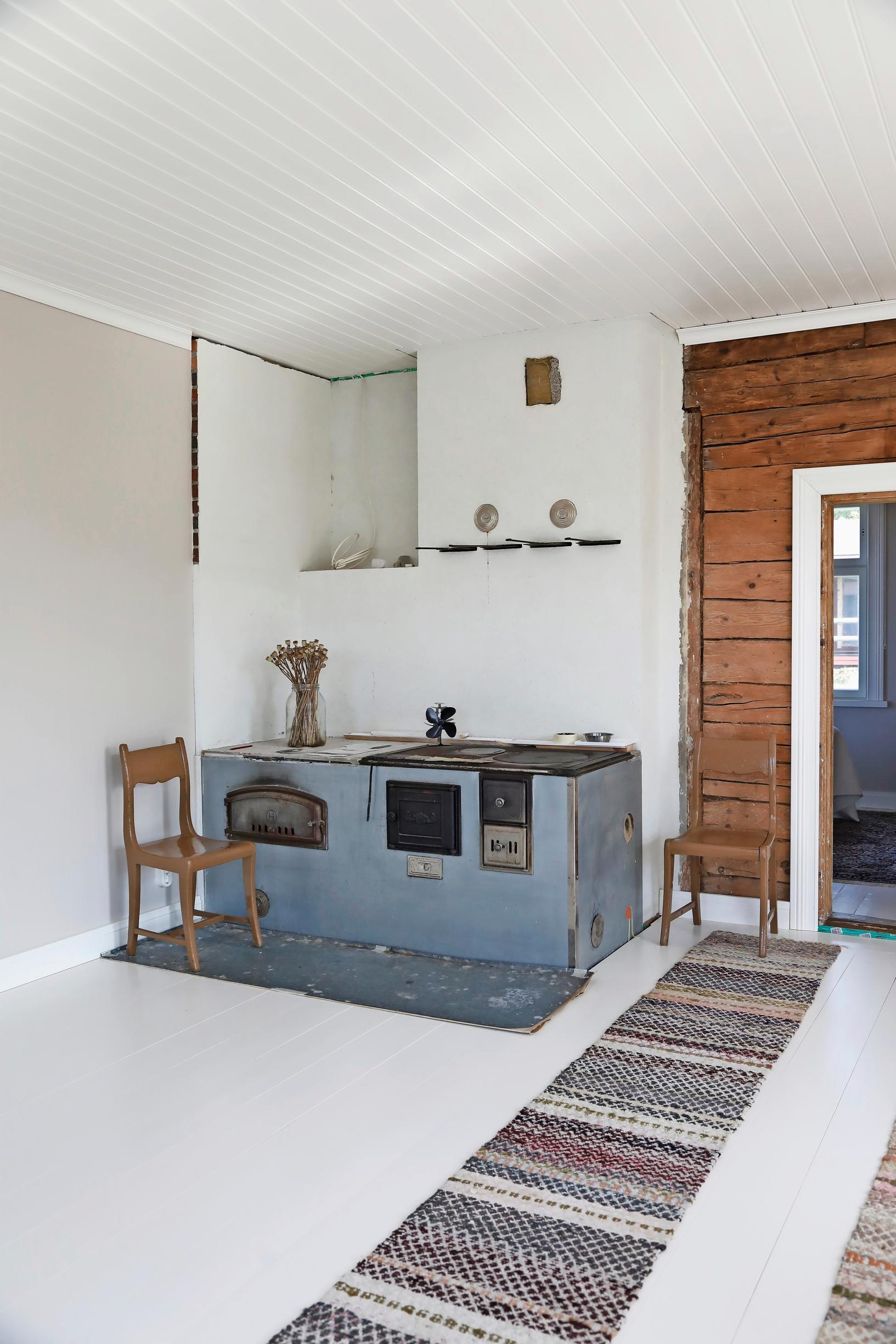

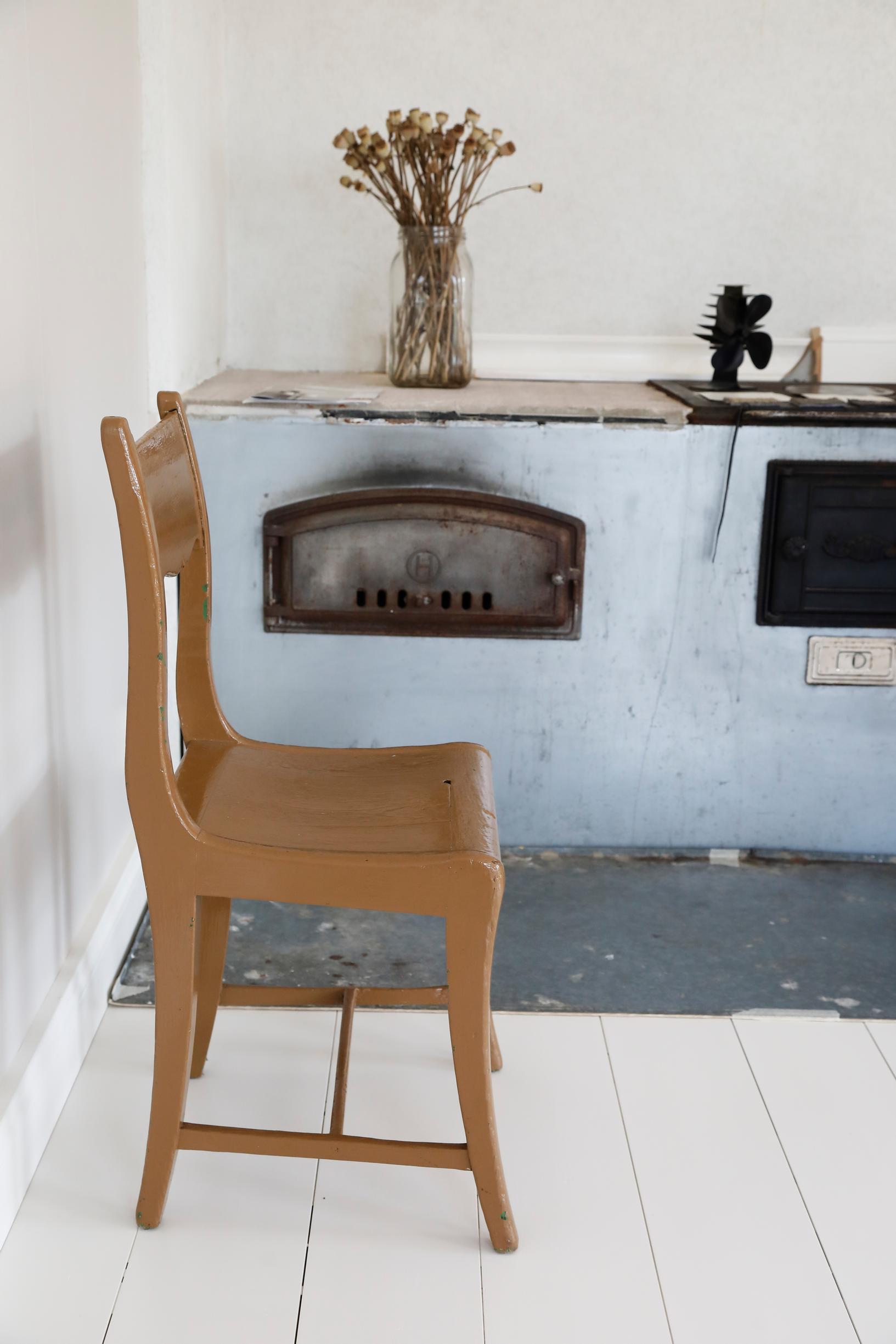

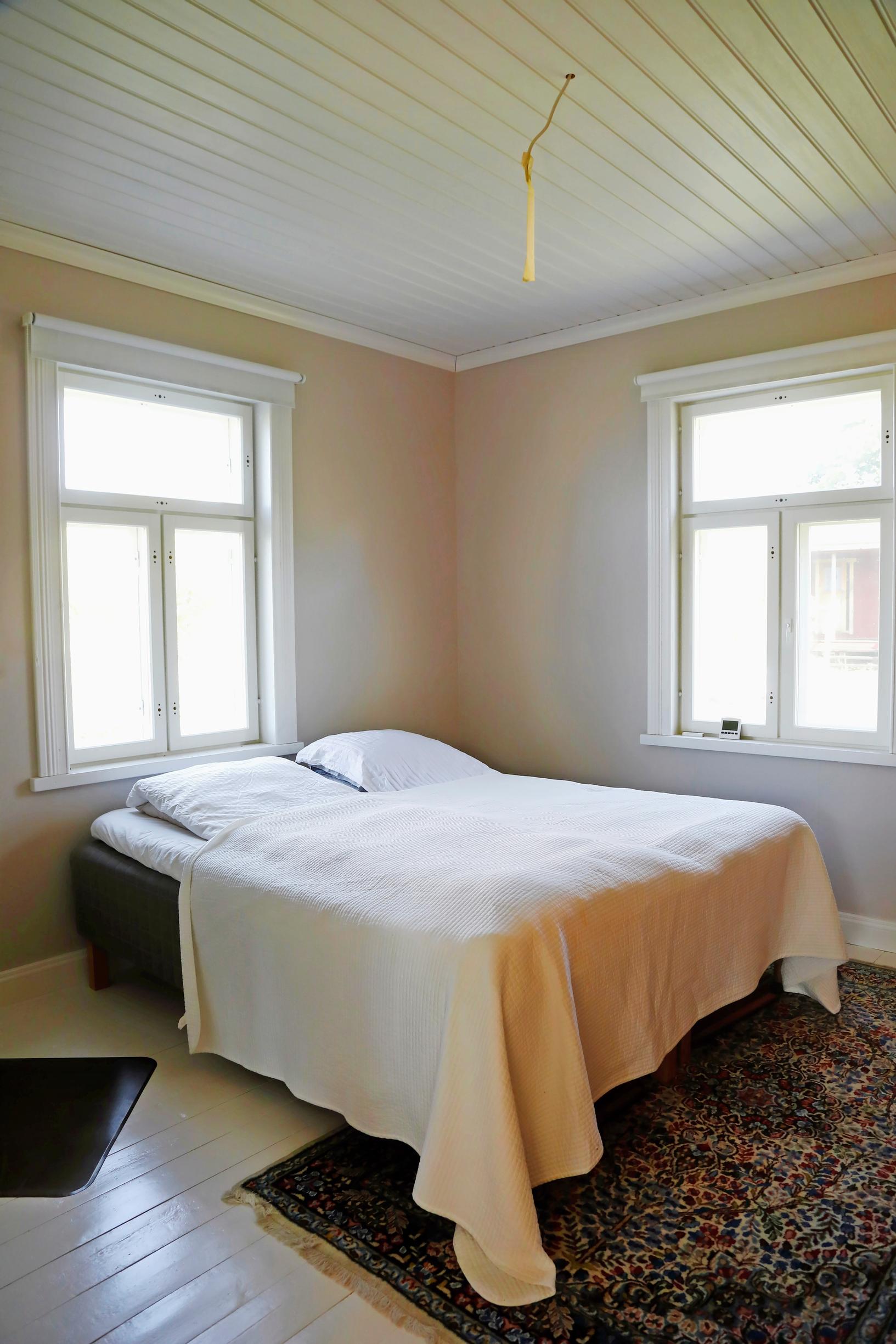
Last fall, Markku and Susanne kept busy outside: they attached window trim and built steps in front of the cottage. There’s still plenty left—the new heated entryway is clad with tongue-and-groove paneling, which they also plan to use on closet doors and end walls.
They still need to install cabinets in the kitchen, and an Italian gas stove waits in storage. Since there’s no regular electricity, they rely on generators and solar panels on the roof. As for the wood stove wall in the main room, they’re contemplating large, tile-like hearth walls reminiscent of a tiled oven—if so, how high should they go?

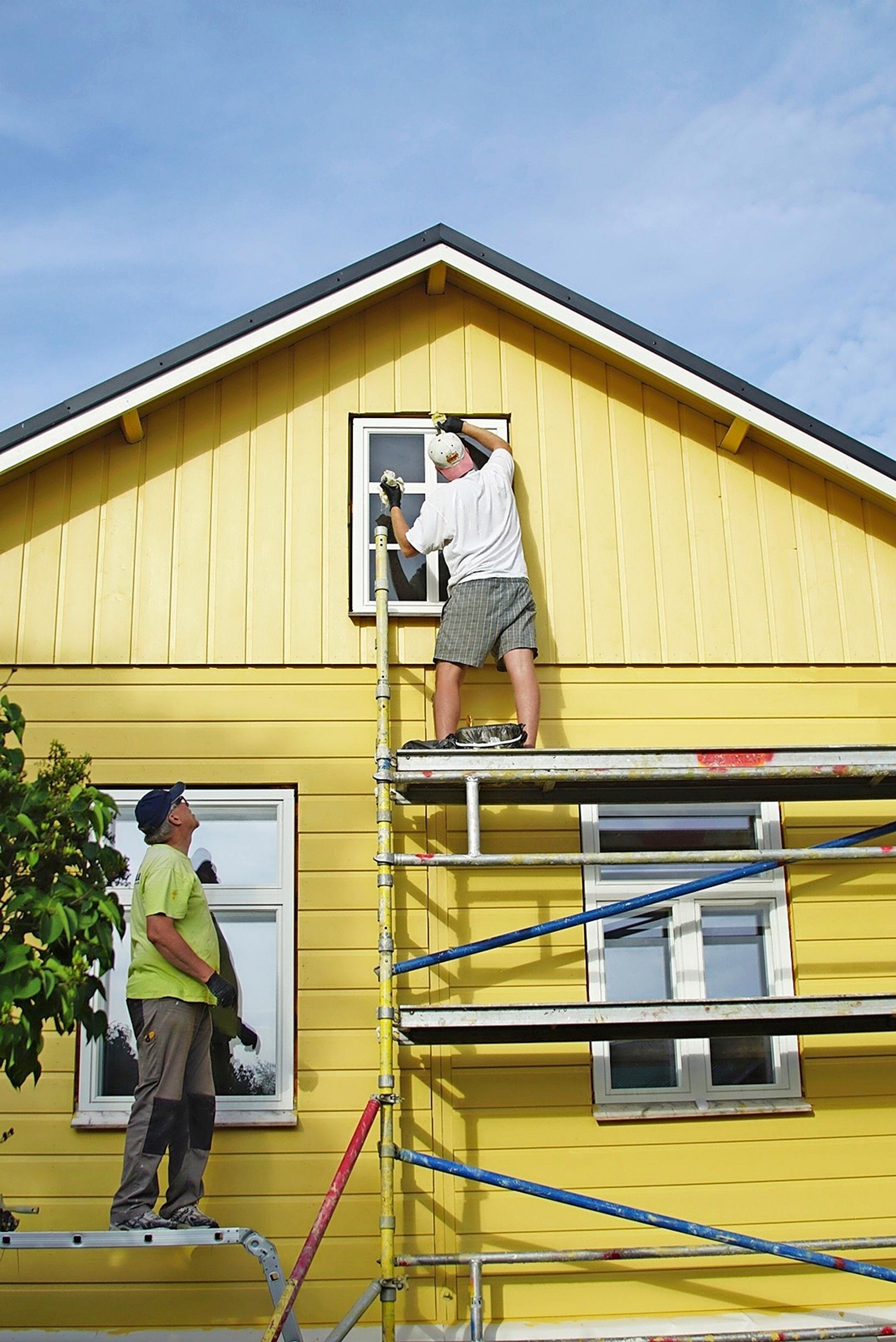





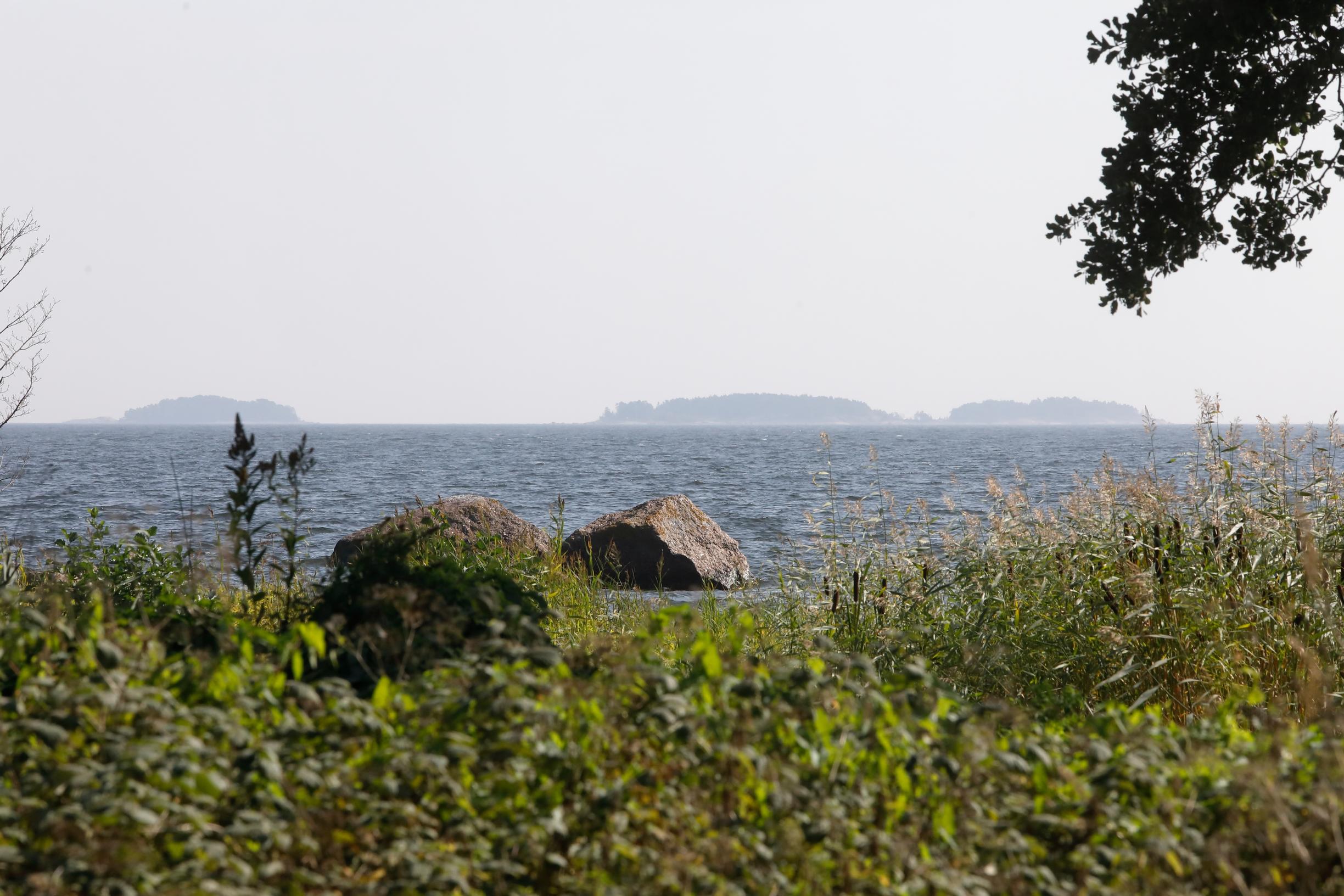
They’ll continue the work this summer, without rushing.
“We decided we’d do it properly. It’s taken as long as it’s taken. If we’re unsure about something, we leave it ‘on the table,’” Susanne says.
Not everything has been a lengthy debate, though. They went with their gut when they found rag rugs on an online flea market—even before the renovation was done. The rugs are already in the main room, which, aside from a few old wooden chairs, is still missing most of its furnishings.
And they never seem to run out of ideas. Susanne wonders if she should bring a bit of the old Swedish era indoors to match the yellow exterior—maybe a touch of gold in the main room? And she has one more dream.
“I still want a daybed! I keep picturing it up in the attic so I can read and gaze out to the sea through that little window.”

